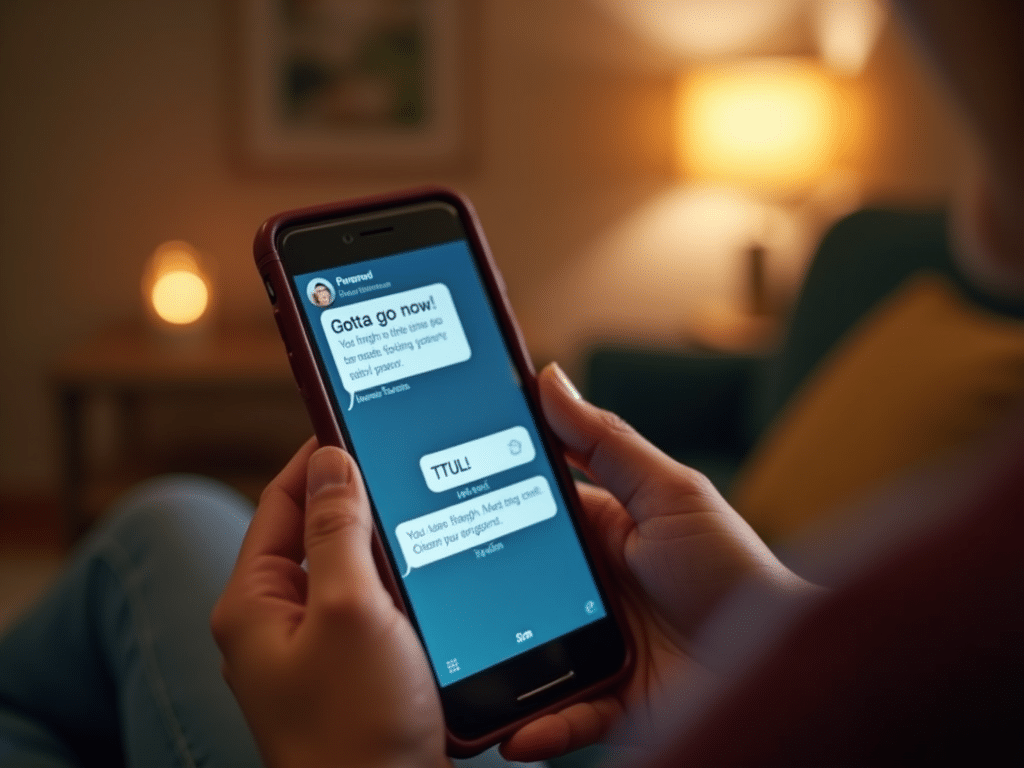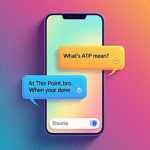Ever been in a rush and needed a quick way to say goodbye in a text? That’s where TTUL comes in handy! This popular acronym is a staple in digital conversations, and it’s time we dive into what it really means and how to use it like a pro.
Key Takeaways
| Aspect | Details |
|---|---|
| Meaning | Talk To You Later |
| Usage | Ending digital conversations quickly |
| Tone | Casual and friendly |
| Similar Terms | TTYL, T2UL, TTYLMF |
| Best For | Texting, instant messaging, social media |
TTUL: The Ultimate Guide to This Trendy Text Acronym 🗨️

TTUL Meaning
TTUL stands for “Talk To You Later.” It’s the cool cousin of “goodbye” in the digital world. Imagine you’re chatting with your bestie about weekend plans, and suddenly you realize you’re late for soccer practice. Instead of ghosting or typing out a long farewell, you can simply drop a “TTUL” and dash. It’s quick, it’s easy, and it gets the job done without any fuss.
Also read: NTN
TTUL Meaning in Text
In the realm of texting and messaging, TTUL is your friendly neighborhood sign-off. It’s like giving a virtual wave as you head out the door. Here’s the scoop on how it works in text:
- Casual Conversations: Perfect for wrapping up chats with friends or classmates.
- Time Management: Use it when you need to step away but plan to continue the convo later.
- Tone Setting: It’s friendlier than a simple “bye” and implies you’re looking forward to chatting again.
For example, you might text your friend:
Friend: So, what time should we meet for the movie?
You: Let's decide later. I've got to run to class now. TTUL!
This way, you’re not leaving your friend hanging, but you’re also not committing to a specific time right away.
Also read: DTN
The Art of TTUL: Tips and Tricks
Using TTUL is pretty straightforward, but here are some pro tips to level up your texting game:
- Know Your Audience: It’s great for friends, but maybe not for your boss or grandma (unless they’re super cool).
- Timing is Everything: Use it when you genuinely plan to continue the conversation later.
- Add Some Flavor: Spice it up with emojis or variations like “TTUL 😊” or “T2UL8R!”
Remember, text abbreviations like TTUL are part of a whole language of digital shorthand. It’s like being part of a secret club where everyone speaks in code. How cool is that? 😎
TTUL vs. Other Goodbyes
Let’s break down how TTUL stacks up against other ways to say goodbye:
- TTUL: Casual, implies you’ll chat again soon
- Bye: Can feel a bit abrupt in text
- See ya: Friendly, but doesn’t necessarily imply future contact
- TTYL: Very similar to TTUL, just slightly more common
- GTK: “Good to know,” not a goodbye, but often used to end conversations
When to Use TTUL (and When Not To)

TTUL is great, but it’s not a one-size-fits-all solution. Here’s a quick guide:
Use TTUL when:
- Chatting with friends
- On social media
- In casual group chats
Maybe skip TTUL for:
- Job-related communications
- Formal emails
- Conversations with people who might not get internet slang
The TTUL Evolution: From Text to Life
Isn’t it wild how internet slang can sneak into our everyday speech? Some people have started saying “TTUL” out loud, pronouncing it as “tee-tull.” It’s like when people say “LOL” in real life. Language is always changing, and we’re living through some pretty cool evolutions!
Also read: PU
The Evolution of TTUL
As digital communication evolves, so does our slang. TTUL has some interesting cousins in the text-speak family:
- T2UL: A more stylized version of TTUL
- TTYLMF: “Talk to you later, my friend” – for when you’re feeling extra friendly
- TTYLXOX: “Talk to you later, hugs and kisses” – perfect for signing off with your bestie
It’s like a whole new language, right? But don’t worry if you’re not fluent yet. Everyone’s learning as we go!
TTUL in the Wild: Real-Life Examples
Let’s look at some ways you might use TTUL in your daily digital life:
- In a group chat: “Gotta run to soccer practice, TTUL guys! 🏃♂️”
- Ending a video call: “This was fun! TTUL, okay?”
- On social media: “Logging off for a bit. TTUL, Twitter fam! 👋”
Remember, context is key. TTUL works best in casual settings with friends or peers who are familiar with internet slang.
Also read: ART OF ZOO
The Do’s and Don’ts of TTUL
Using TTUL is pretty straightforward, but there are some unwritten rules:
Do:
- Use it to end casual conversations
- Pair it with emojis for extra flavor
- Follow up later as promised (don’t leave people hanging!)
Don’t:
- Use it in formal emails or professional settings
- Overuse it (variety is the spice of life, after all)
- Forget that not everyone might understand it
TTUL and Digital Etiquette
In the grand scheme of text abbreviations, TTUL is pretty tame. But it’s still part of good digital etiquette. It’s like saying “see you later” instead of just walking away from a conversation. It shows you care about the person you’re talking to and plan to continue the chat later.
Also read: SIDE EYE
The Future of TTUL
Who knows? In a few years, we might be using holographic messages to say goodbye, and TTUL might seem as outdated as a flip phone. But for now, it’s a handy little acronym that gets the job done.
As we wrap up this deep dive into TTUL, remember that language is always changing. Today’s slang could be tomorrow’s dictionary entry. So keep your eyes peeled for new acronyms, and don’t be afraid to use them. Just make sure you know what they mean first! 😉
Now, I’ve got to run. TTUL, fellow slang enthusiasts! 👋







